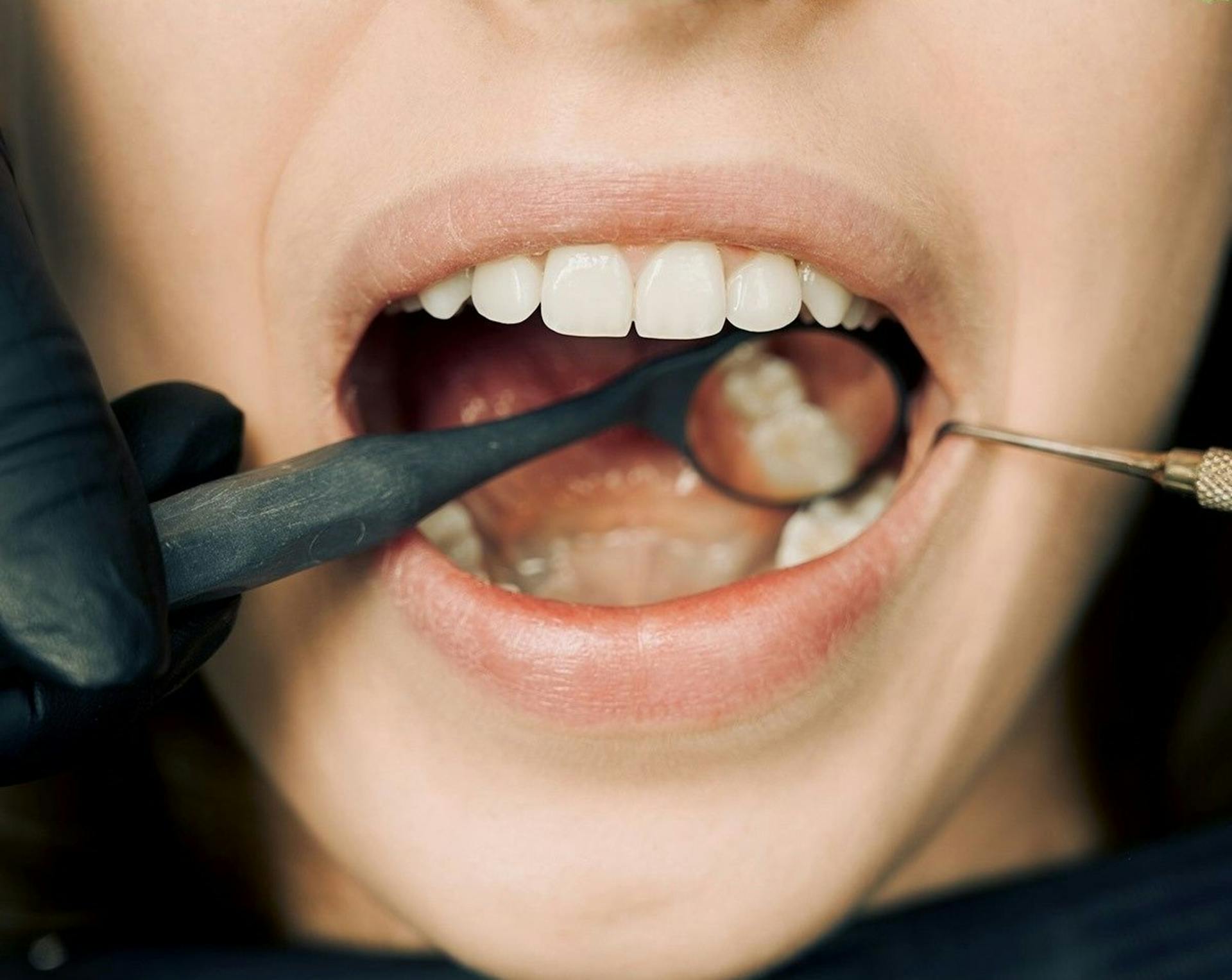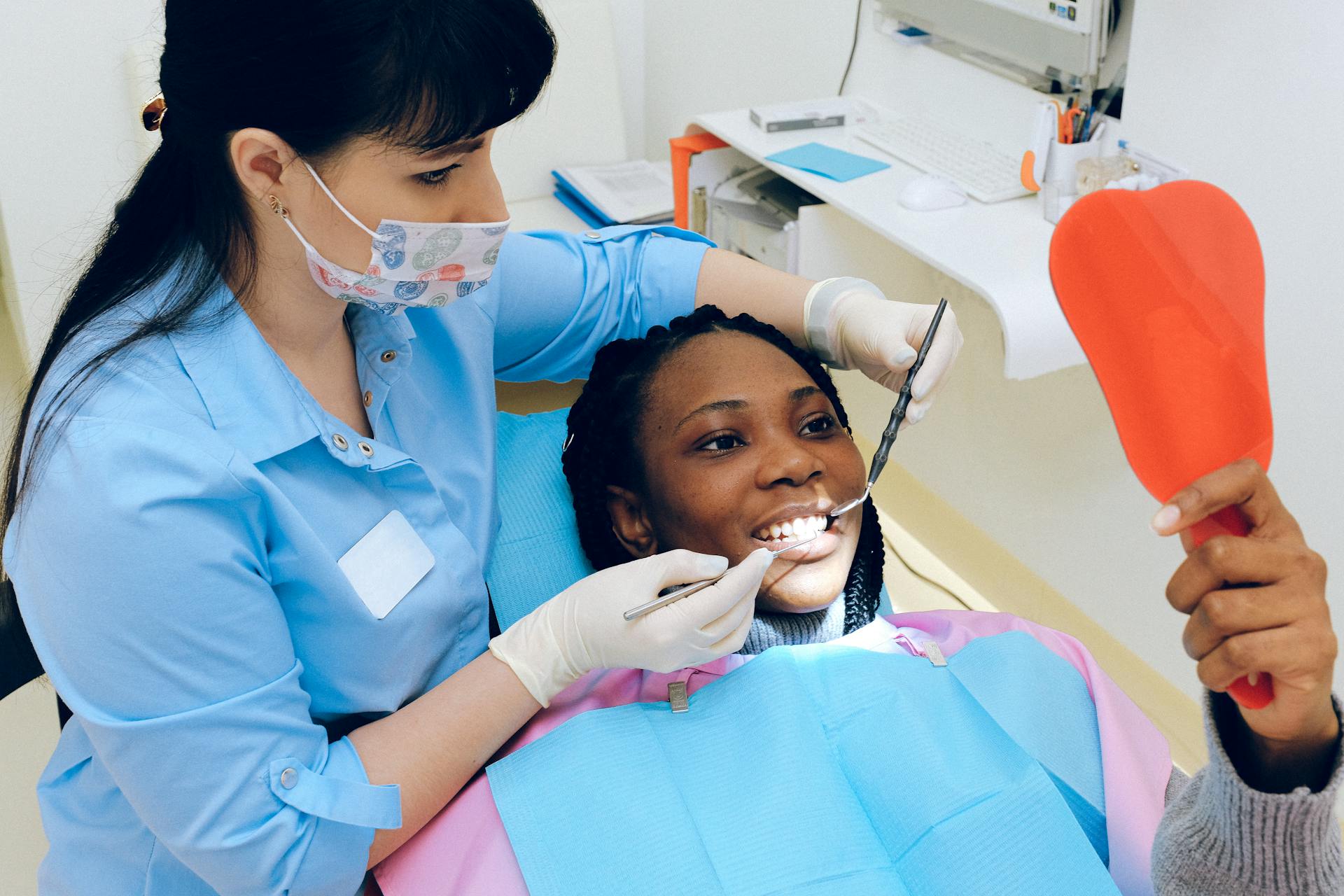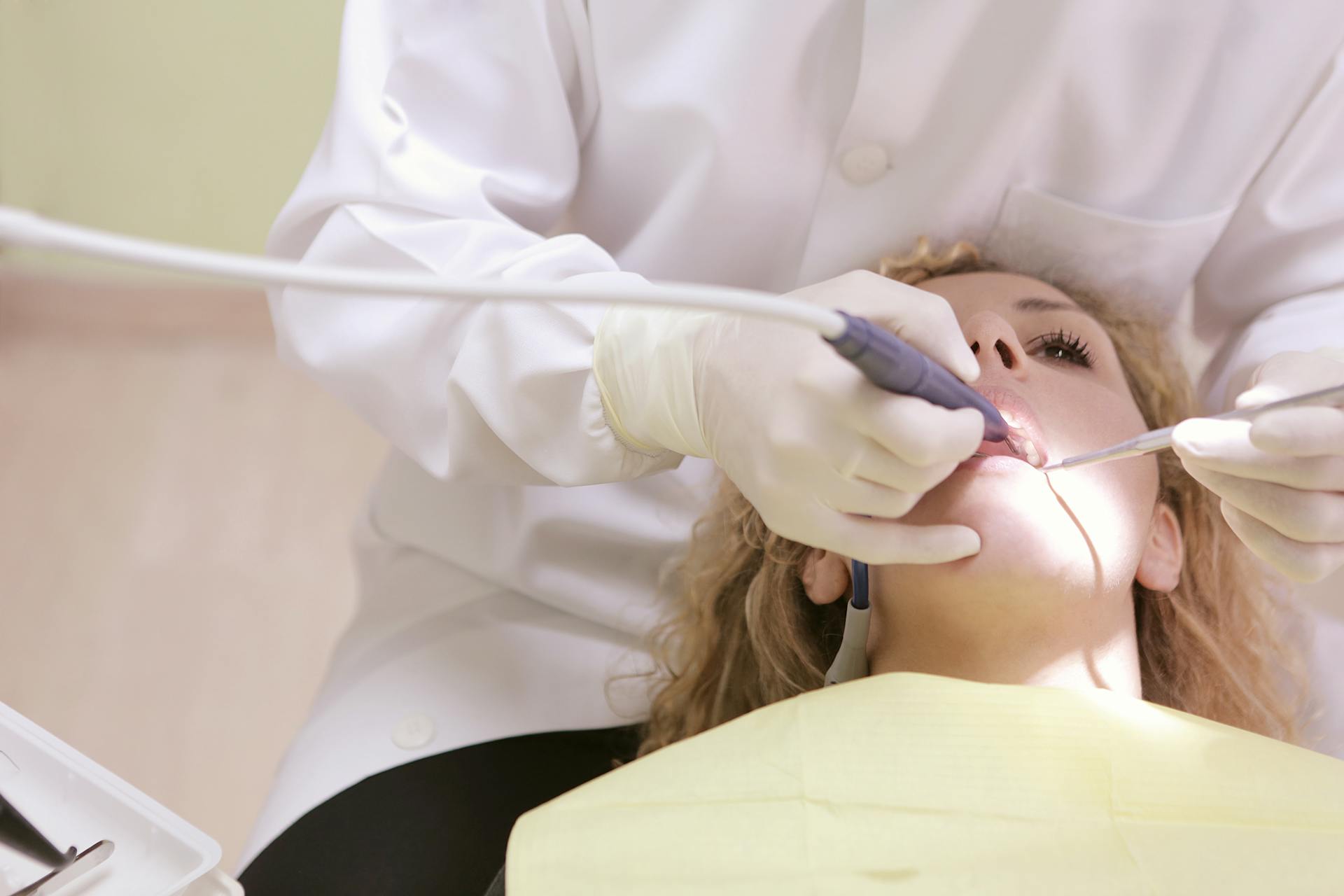
Dental insurance options can be overwhelming, but understanding the different types can help you choose the right one for your budget.
Individual dental insurance plans can cost between $20 to $50 per month, depending on the provider and coverage level.
Group dental insurance plans, often offered through employers, can be more affordable, with premiums ranging from $10 to $30 per month.
Some dental insurance plans require a waiting period, typically 6-12 months, before coverage kicks in.
You can also consider discount dental plans, which offer reduced rates on dental procedures but don't provide traditional insurance coverage.
Types of Dental Insurance
There are four basic types of dental coverage plans, each with its own unique characteristics. These plans cater to different needs and preferences.
A Dental Maintenance Organization (DMO) works similarly to a Health Maintenance Organization (HMO), offering lower premiums with no deductibles but restricted coverage to in-network dentists.
You can choose the dentist you want with a Preferred Provider Organization (PPO) plan, and the dental coverage follows them. This type of plan also allows you to see a network dentist and pay lower service fees.

Dental savings or dental discount plans are not dental insurance, but rather offer enrollees discounts on basic services like teeth cleaning. You pay lower premiums but must use dentists who participate in the discount plan network.
Dental indemnity plans cover a percentage of your dental fees with no network restrictions, but they come with high premiums, coinsurance, and deductibles.
Here are the four types of dental coverage plans summarized:
Understanding Dental Insurance
If you're looking for dental coverage in California, you're in luck - many health plans purchased through the Covered California Health Exchange automatically include pediatric dental benefits for children up to age 18.
Many plans available off the Exchange also include pediatric dental insurance, so be sure to check your options carefully.
Adults can get dental coverage in California by purchasing it as a supplement to their health insurance plan.
Some plans offer more benefits, making it a great option for those who want extra coverage.
Consider reading: Can You Have Dental Insurance without Health Insurance
An exception is when dental insurance supplements a health plan purchased by an employer.
Small business dental plans sometimes have more coverage, and including orthodontia coverage may be more cost-effective.
To find dental coverage, contact your health insurance agent, broker, or human resources department if your employer offers group health insurance.
You might like: Is Dental Insurance Considered Health Insurance
Insurance Plans and Providers
To find a dentist, start by clicking "Find a Dentist" on your insurance provider's website, then select the specialty you're interested in searching.
First, make sure "Delta Dental PPO" is selected as your network option.
You can also search for in-network providers on the Cigna splash page by signing in or visiting their provider search link.
Having many dentists and dental practices in your insurance plan is a good indicator of the company's financial standing and reputation.
A plan with many providers typically has a solid reputation and will likely reimburse claims on time.
Shopping for Dental Insurance
Shopping for dental insurance can be a daunting task, but it's essential to find a plan that fits your needs.
Most people want their current dentist to be part of the insurance plan's network, so it's a good idea to check the provider's website for a directory of in-network dentists.
If your dentist isn't in-network, you can shop around for a different insurance provider or select a dentist that accepts your insurance.
It's also important to consider having multiple options, as an insurance company with many dentists and providers is more likely to remain financially stable and have a good reputation.
Purchasing dental insurance is a personal decision that depends on your dental needs and the number of family members you have.
Typical dental insurance plans cover preventive care at 100%, basic procedures at 70%, and major procedures at 50%.
Most plans have a deductible, which is the amount you pay out-of-pocket before the insurance kicks in, and a maximum annual limit, after which you're responsible for all dental expenses.
It's essential to consider all costs, including the monthly premium, deductible, copays, and maximum annual limit, to ensure you're getting the best value for your money.
If you have extensive dental issues, you may want to look for a plan with a high spending cap to avoid out-of-pocket expenses.
Insurance Coverage and Costs
Insurance coverage and costs can be a complex topic, but it's essential to understand the basics to make an informed decision. There are four basic types of dental coverage plans, including Dental Maintenance Organization (DMO), Preferred Provider Organization (PPO), dental savings plan, and dental indemnity plans.
Consider the monthly premium, deductible, and out-of-pocket costs when choosing a dental insurance provider. Most insurance companies put a cap on the amount they will reimburse each year, so it's crucial to note the maximum annual limit. Routine dental treatments are usually covered, but some plans may not cover extras like whitening or sealants.
Here's a breakdown of the different costs associated with each type of plan:
Keep in mind that these costs can vary depending on the specific plan and provider, so it's essential to research and compare different options to find the best fit for your needs.
Yearly Maximum
The yearly maximum is a crucial aspect of dental insurance to consider. It's the most that the insurance company will pay in a calendar year, typically ranging from $750 to $2,000.

Most dental insurance plans have a yearly maximum, but some plans have no yearly maximum at all. This means you'll be responsible for 100% of any remaining charges once you reach the maximum.
The more expensive the policy, the higher the yearly maximum will be. This is because the insurance company is covering more of the costs, so you'll have more protection against high bills.
Once you reach the yearly maximum, all your dental expenses will be out-of-pocket. This can be a significant burden if you have extensive dental issues that need to be addressed.
Coverage for Procedures
Dental insurance plans can be confusing with so many options available.
Plenty of options exist for dental insurance, which can cater to a wide range of needs.
The types of coverage, premiums, and deductibles can vary, which may be overwhelming.
Consider talking to your dentist to see what plans they recommend and accept.
If you need major dental work, look for a policy with a high spending cap.
If you have minimal dental needs, selecting a partial coverage plan may be the most fiscally responsible decision.
Consider All Costs
The monthly premium is just the beginning. You also need to consider the deductible, copays, and maximum annual limit when choosing a dental insurance plan.
Most insurance companies put a cap on the amount they will reimburse each year, so it's essential to check the maximum annual limit. This can be a major concern if you have extensive dental issues that need to be addressed.
Routine dental treatments are usually covered under dental insurance, but many plans don't cover "extras" like whitening or sealants. Be sure to check with the insurance carrier to learn about covered procedures.
Some insurance plans have required waiting periods, which can leave you waiting a long time for coverage on specific procedures, especially the more expensive ones.
Here's a breakdown of the costs you should consider:
Insurance Options and Availability
Dental insurance options vary greatly depending on your employer, individual plan, or group plan. Some employers offer dental insurance as a benefit, while others do not.
Many dental insurance plans are available, including PPO, HMO, and Indemnity plans. These plans offer different levels of coverage and flexibility.
Some dental insurance plans cover preventive care, such as cleanings and check-ups, at 100% or with minimal copays. This can help you stay on top of your oral health.
Employers with 50 or more employees are required to offer group dental insurance under the Affordable Care Act. This means many employees have access to dental insurance through their job.
Dental insurance plans often have waiting periods before coverage begins. This can range from 6 to 12 months, depending on the plan.
Group dental insurance plans can be more expensive than individual plans, but they often offer more comprehensive coverage.
On a similar theme: Dental and Vision Insurance for Small Business
Frequently Asked Questions
What is the difference between a PPO and a DMO?
A PPO (Preferred Provider Organization) plan allows you to see any licensed dentist, in- or out-of-network, with varying costs, while a DMO (Dental Maintenance Organization) plan typically only covers out-of-network services in emergencies or where required by law.
Sources
- https://www.healthforcalifornia.com/supplemental-plans/dental
- https://www.tn.gov/partnersforhealth/other-benefits/dental.html
- https://www.deltadental.com/us/en/protect-my-smile/dental-insurance-101/dental-hmo-vs-ppo-dental-insurance-what-is-the-difference.html
- https://www.boutiquefamilydentistry.com/irvine-ca/how-does-dental-insurance-work/
- https://www.premierdentalohio.com/blog/different-types-of-dental-insurance
Featured Images: pexels.com


